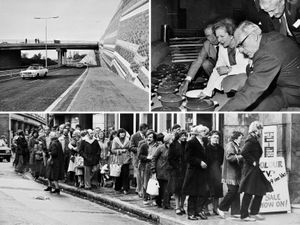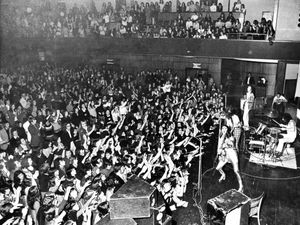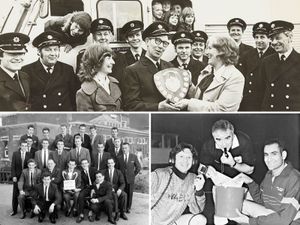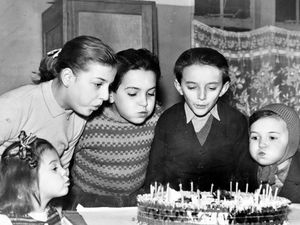How final train journey went from misery to top send off
With an eye to being on the spot for a piece of passing Shropshire railway history, John Horsley Denton paid the first class fare to ride on a brake van, and turned up expectantly at the station.
His personal mission was to travel on the last ever goods service to Coalport East Station on December 5, 1960. So it was a crushing disappointment to discover as the train pulled in to Madeley Market Station that it was not going to make the onward journey to Coalport.
But when staff found out why he was there, they were sympathetic – and made that historic last journey to Coalport after all, just for him. And then they had an impromptu party.
John recounted the remarkable story years later to Bridgnorth railways historian Chris Magner, as Chris collected tales from people who had ridden on local lines.
The Wellington to Coalport East passenger service was known as the Coalport Dodger, and after passenger services ended on May 31, 1952, freight trains continued until December 1960. Chris says John Horsley Denton, an author and radio broadcaster who in later life lived on the border near Welshpool, wanted to travel on the last ever goods train.
"John applied to have a ticket. In those British Rail days it was possible for people to travel in the brake van of freight trains providing they paid a First Class fare," said Chris.
Surprise
"On that Friday morning John turned up at Madeley Market to travel down to Coalport for the last time. The only trains after that were to clear any wagons and, of course, the lifting track train.
"The train duly arrived just after dawn was breaking hauled by a former GWR pannier tank locomotive No 9657. To John's disappointment the driver said they would not be going down to Coalport that morning as there was no traffic for Coalport that day so there was no reason for going.
"When John told him this was going to be the last ever service to Coalport East, the driver agreed to go just for the history. After the train had done some shunting and photographs were taken, to John's surprise the driver blew the locomotive's whistle and sent the fireman to collect the staff from the Coalport Station on the Severn Valley Line on the opposite side of the river.
"Much to John's amazement, as it was only 9am, everyone retired to a local hostelry to celebrate the demise of the Coalport branch. Apparently, according to John, 'they had quite a party.' In his words it was 'a most auspicious way to mark the occasion.' Suitably refreshed, John travelled back on the train to Madeley. He said: 'It was a splendid journey.'"
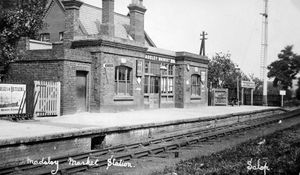
Sadly, Chris has never seen the photographs which were taken on that day nearly 60 years ago.
Another tale to arise from Chris' researches comes from his delve into the stories of people who used the Much Wenlock to Craven Arms railway to go about their daily business.
In the mid-1930s the Great Western Railway was facing increased competition from local bus services.
"So they decided to build little halts, particularly near roadsides and near villages that did not have a station. Easthope Halt was one of them, quite a way from the village and down a steep hill, and with no lights in the dark winter months.
"Ten-year-old Miss E Birch – sadly, I don't have her Christian name – lived quite a way from Longville Station in 1935 where she caught the school train to Coalbrookdale. In the winter her journey was hazardous and once it was so bad in the cold that she fainted on the rural lane she travelled on, came off her bike and by chance was rescued by a group of roadmen who took her to Longville Station.
Superiors
"Mr Tarver, the stationmaster, was concerned about her and the long journey she had to make to get to the station. One day he told her that he was going to make her journey much better. Miss Birch wondered how he could. Unknown to her, at that time the GWR built a little halt at Easthope which was much nearer her home."
As she could not cycle there as it was across fields, she used to walk there in wellington boots, change into shoes at the little halt, and leave the boots under the bench until she returned home in the afternoon.
Chris said: "I do not think the little halt was built especially for her, but the GWR would have asked their local stationmaster whether there were any potential customers in the area. Knowing the young lady, he could say to his superiors there were potential passengers, although to be fair it was quite a walk from the actual village of Easthope to the railway."
Another girl who had been using Presthope station also began using Easthope Halt, as it was closer to her home.
Both girls were to move away, and Easthope became a little halt without passengers before becoming another part of Shropshire's railway story to disappear into history.

